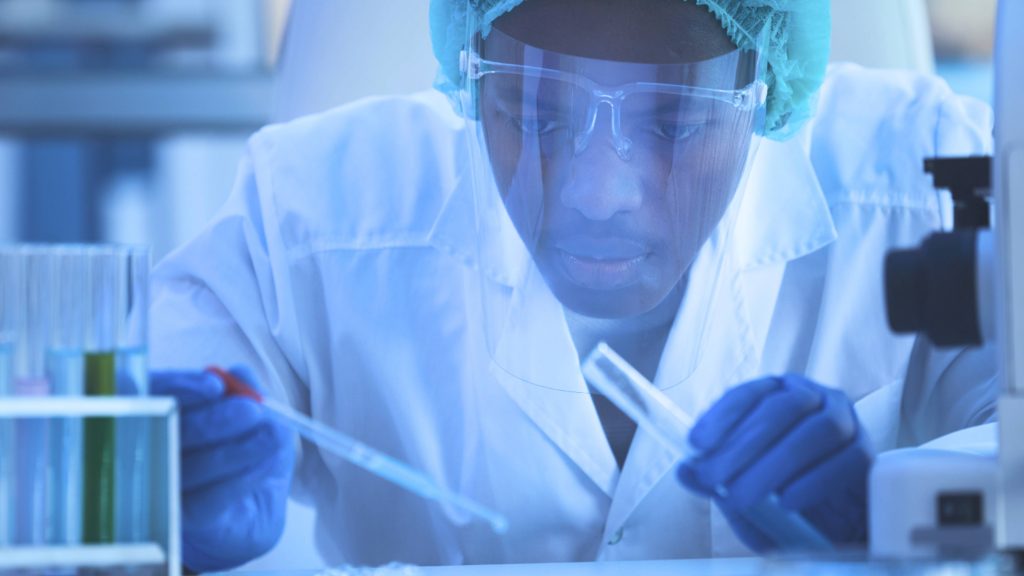
The prospect of having a COVID-19 vaccine raises expectations and plenty of questions. While no one can pinpoint the elusive question of when there will be a vaccine, there are some questions that can be answered now.
Dr. Andrew Badley, head of Mayo Clinic's COVID Research Task Force, recently shared his expertise in this Q&A, starting with explaining the function of a vaccine.
Watch: Dr. Badley discusses vaccines during time of COVID-19.
Journalists: Broadcast-quality sound bites are in the downloads at the end of this post. Please "Courtesy: Andrew Badley, M.D. / Infectious Diseases / Mayo Clinic."
What is the goal of a vaccine?
The goal of a vaccine is to do one of two things. One is to prevent an infection. The second is to make an infection less severe if you get infected with that virus or organism. The way a vaccine achieves that is by creating an immune response that is specific for the virus or whatever it is you're vaccinating against.
There are two kinds of immune responses that we are interested in. The first kind is called antibodies. Antibodies are soluble and are present in plasma, and their job is to bind to the virus and neutralize it so it can't infect a cell. The second kind of immune response we're interested in is called a T cell response. And T cells are those cells of the immune system that kill cells we don't want. The goal of a T cell in the context of an infection is to kill those cells that are infected, and those infected cells essentially become virus factories.
What constitutes a safe and effective vaccine?
Typically, what we will do is controlled clinical trials. A number of people get the vaccine and a number of people don't get the vaccine. And the hope is that those who get the vaccine get infected less frequently, and when they are infected, they get less sick.
On the safety side, there are a variety of side effects that are associated with any medicine or any therapy, some of which we can predict and some of which we can't predict. It's important to have controlled observation of people who get the vaccine to see whether or not there are side effects that are unintended.
How important is post-marketing surveillance of a vaccine?
Monitoring long-term side effects of any therapy is critical. After a product is approved by the Food and Drug Administration and sold as a product, then they go into a process called post-marketing surveillance.
We are so far away from that occurring that right now. We need to do careful controlled observational studies of what the side effects are. It is important to realize side effects can be good, or they can be bad. We've talked about some of the bad side effects ― that these vaccines can make you worse if you get infected. Some of these vaccines can do unintended things. They can cause inflammation or autoimmunity. These side effects are all very rare, but they are possible.
How should vaccines be distributed when first available?
We need to take a very careful and considerate approach to distribution of the vaccine or vaccines. It's important to note that even if we have one vaccine that works, that it is probably not enough to cover the entire human population. It's probable we will have multiple different vaccines approved, if they prove effective.
What will be the logistics of it? I don't know what the right answer is, but I think the characteristics of the right answer include: There should be a centralized rationing of this; it should be coordinated and thoughtful; and it should not be those who offer to buy it first, get it first.
What is the range of research that Mayo is doing on COVID-19?
To the credit of Mayo leadership, they put together the SARS-CoV-2 COVID Research Task Force and empowered it to oversee the totality of research at Mayo related to COVID-19. Between then and now, we have developed 17 workstreams that cover everything you can imagine in COVID-19 research. That includes studies on the virus itself, studies on the immunology, studies on the vaccine, inpatient treatments, outpatient treatments, databases, biobanks, a process for triaging the biobanks, who gets what specimens and why, and artificial intelligence analytics of the medical record and the data that's coming out.
A lot of effort has gone into understanding why different populations are differentially affected by this pandemic, and that includes both on the biologic basis and the societal basis. We have spent a lot of time translating protocols and providing information in multiple different languages. We have workstreams that work on environmental decontaminations, so how you clean surfaces so that SARS (severe acute respiratory syndrome) doesn't stay around. Mayo has done a lot of work, and it's been truly remarkable how experts from almost every domain have stepped up and contributed to the research portfolio surrounding SARS-CoV-2 and COVID-19.
Why is getting a flu vaccine important?
We know when you have influenza, you can be more susceptible to other infections. It is probable that if you have influenza, you can be more susceptible to COVID-19. A second is every human has a certain physiologic reserve, which means that we can stand up with a certain degree of insult. But if we go beyond that, then it's going to be difficult for us to recover. And if you consider the additive effects of influenza and SARS-CoV-2, that could be devastating. I think it's in everybody's interest to try to prevent acquisition of flu in this upcoming season.
___________________________
Information in this post was accurate at the time of its posting. Due to the fluid nature of the COVID-19 pandemic, scientific understanding, along with guidelines and recommendations, may have changed since the original publication date.
For more information and all your COVID-19 coverage, go to the Mayo Clinic News Network and mayoclinic.org.







